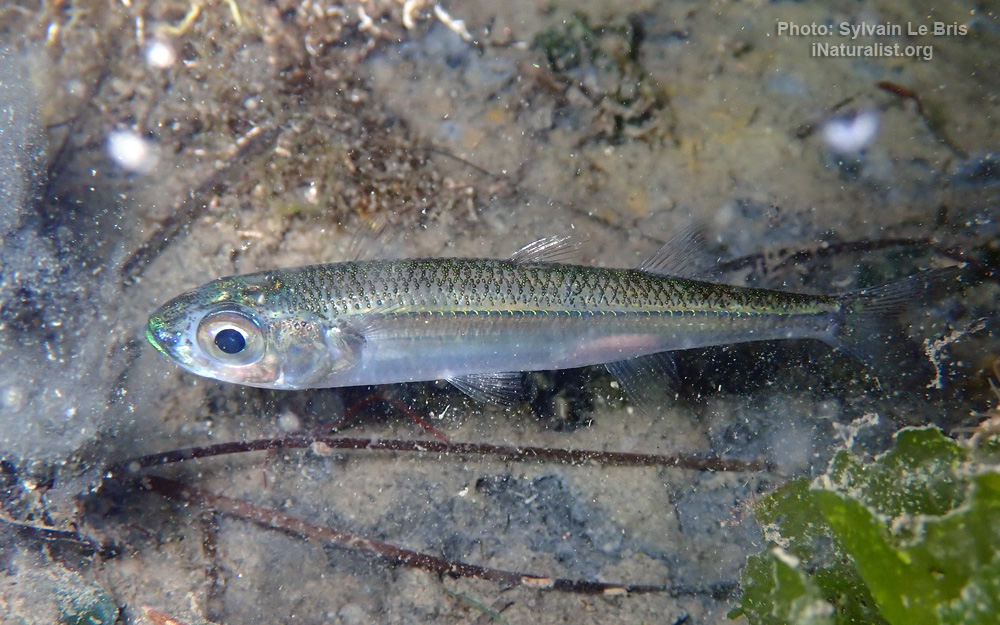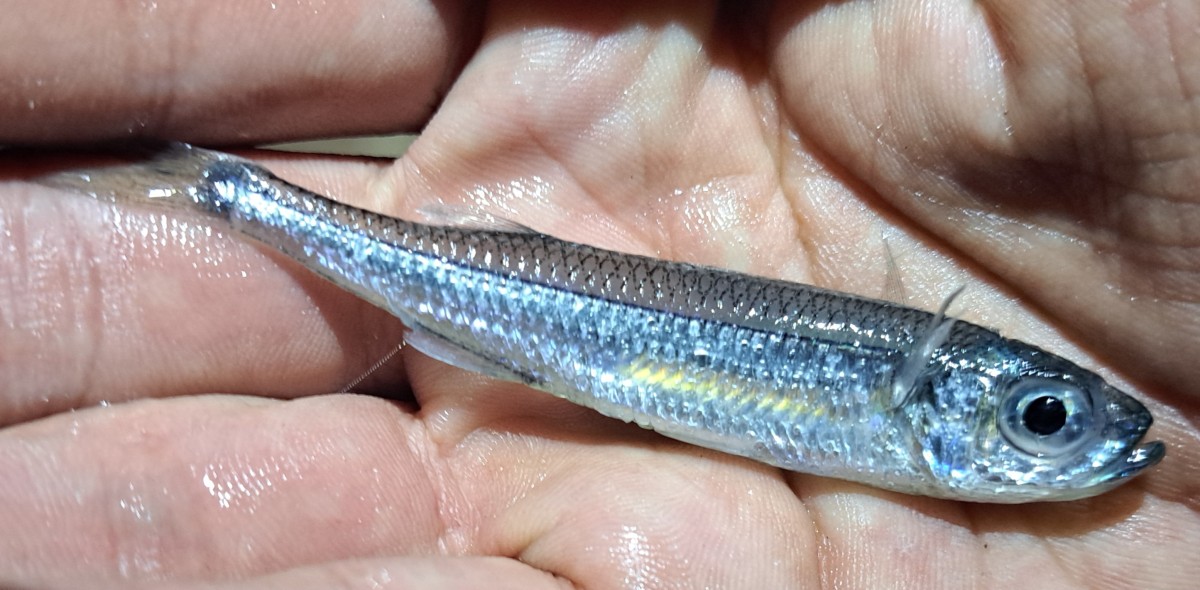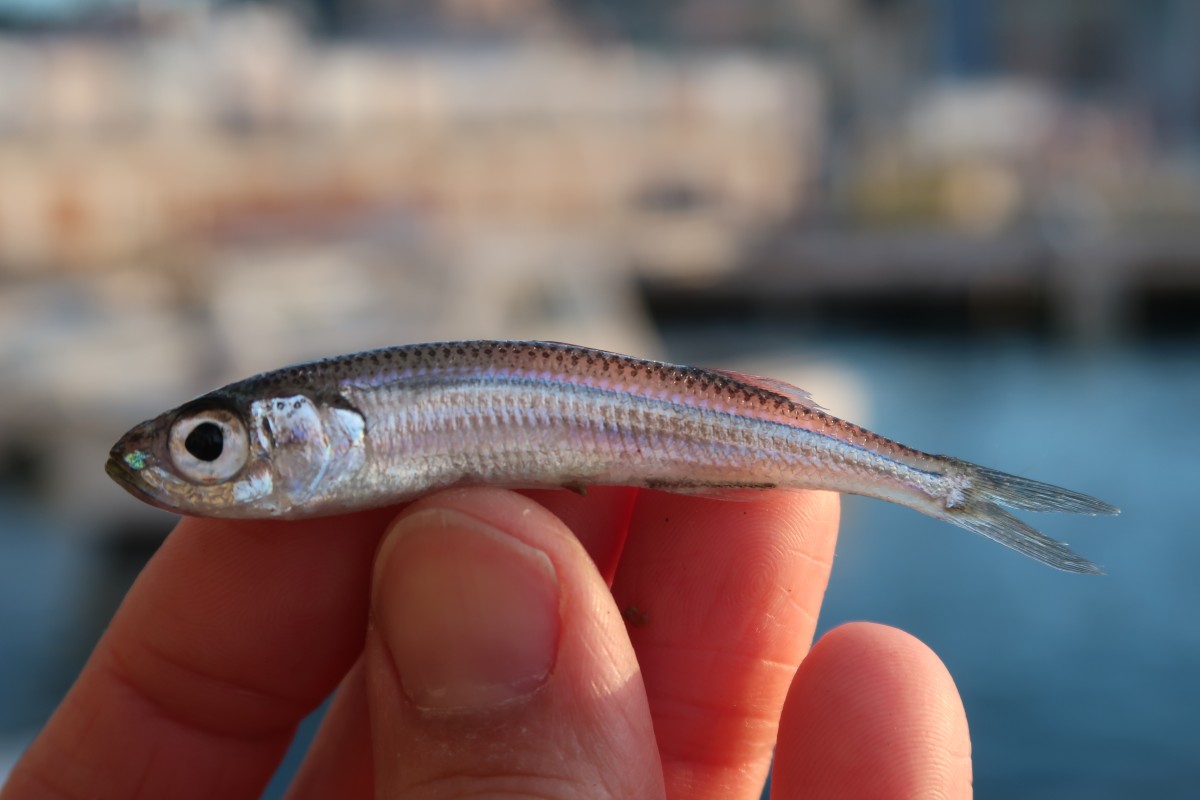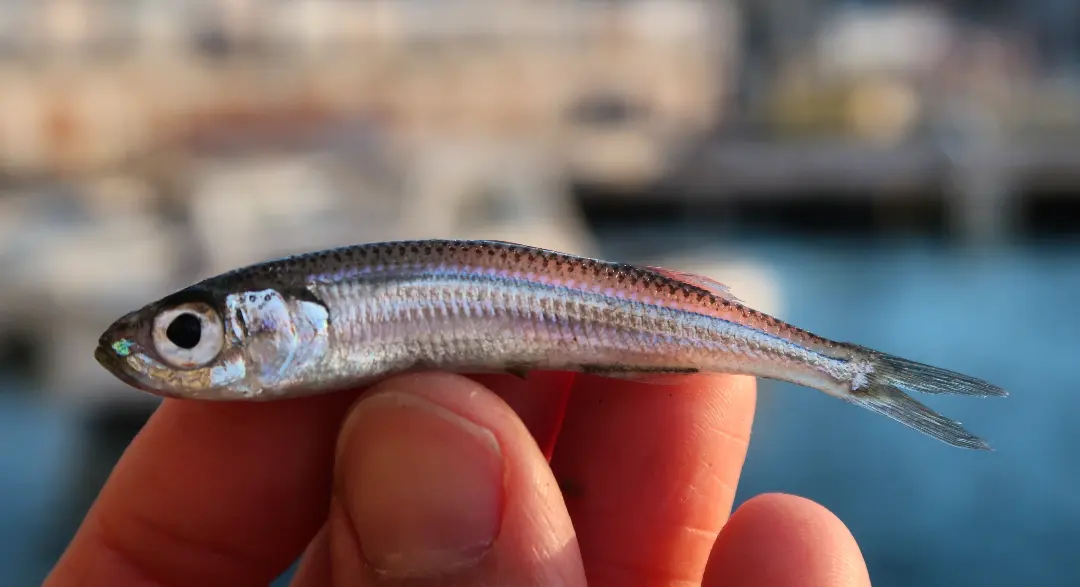Big-scale sand smelt
(Atherina boyeri)

Classification
General data
The big-scale sand smelt (Atherina boyeri) is a species of fish in the family Atherinidae. It is a euryhaline amphidromous fish, up to 20 cm in length.
It is a small pelagic fish species that occurs near the surface in the littoral estuarine zone: in lagoons, salt marshes (77 psu), shallow brackish areas (2 psu), and inland waters which are rather unsuitable for other fish species, due to their high ionic strength and salinity.
Body is rather long, slender, and moderately flattened. Eyes are large. The head and body are scaly. The mouth is protractible, upwardly directed, with small teeth. The lower jaw has an upper expansion within the mouth (high dentary bone). There are two separate dorsal fins, with all rays of the first and 1-2 anterior rays of the second dorsal fin being unsegmented. The anal fin is similar to the second dorsal fin, while the caudal fin is forked. The first dorsal fin has 6-10 flexible spines.
It is an omnivorous species feeding on zoo plankton and small bottom-living animals (crustacean gammarids, polychaete worms, and molluscs).
It is found in the eastern Atlantic from Portugal and Spain to Nouadhibou (Mauritania) and Madeira. Also it occurs in the Mediterranean, including the inshore lagoons, such as Trasimeno and Lesina in Italy, Hyères in southern France such as Marseille and Lake Qarun in Egypt; an isolated population is found near the coasts of England and the Netherlands.
In the Black Sea, it is widespread along all coasts, in lagoons and estuaries, in the downstream of rivers Danube, Dniester, Southern Bug, Inhulets, and Dnieper, with a permanent population is in the Kakhovka Reservoir.
The isolated population in the Caspian Sea is characterised as subspecies A. b. caspia (Eichwald, 1838).















